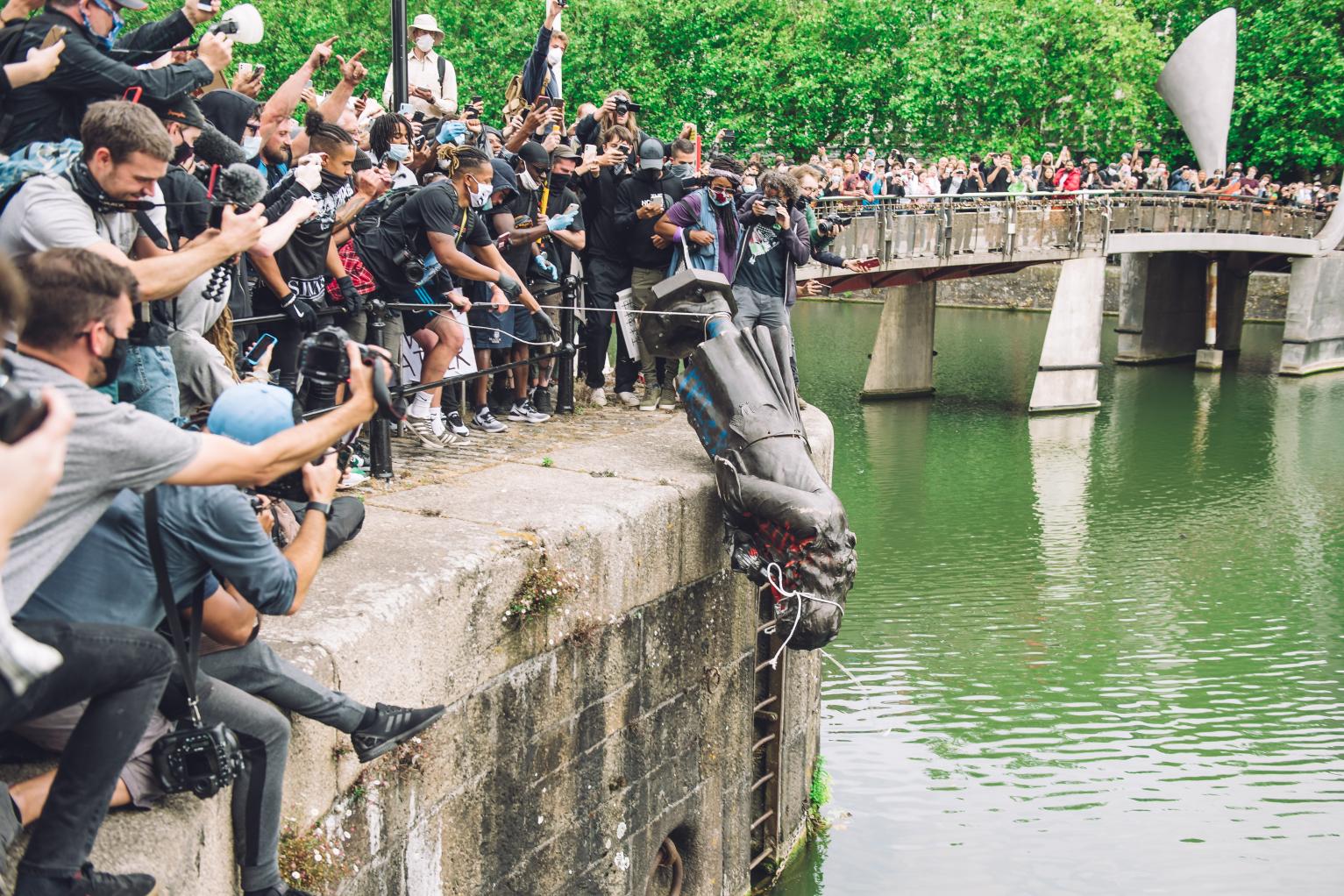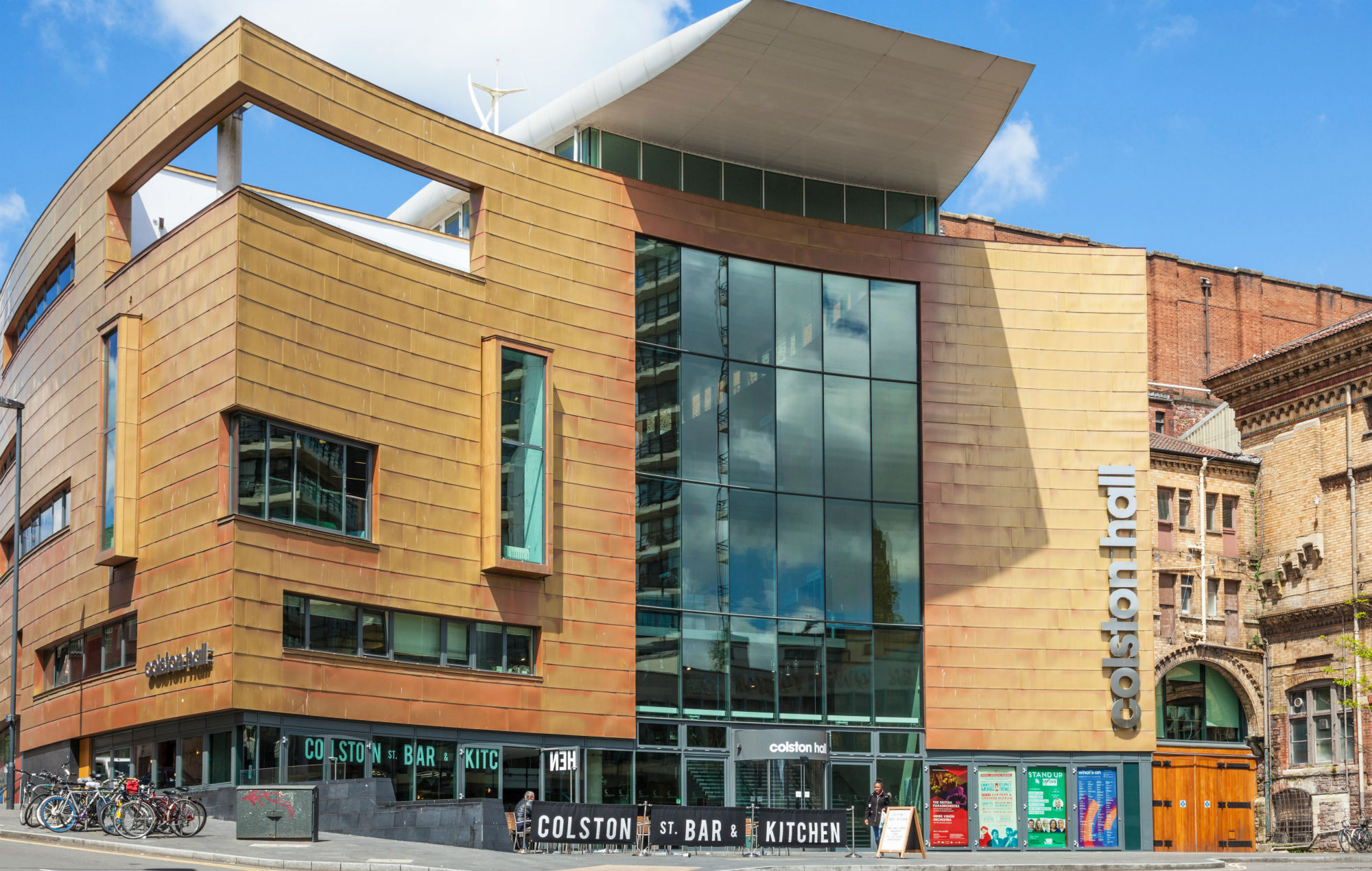| Juries | ||
| |
Edward Colston was an English merchant, philanthropist and Tory Member of Parliament who  was involved in the
Atlantic slave trade. Born in 1636, Colston followed
his father in the family business becoming a sea
merchant. By 1672, he had his own business in London
trading in cloth, wine, sugar and slaves. A
significant proportion of Colston's wealth came
directly or indirectly from the slave trade. In
1680, he became an official of the Royal African
Company, which at that time held the monopoly in
Britain on slave trading. On his death in 1721, he
bequeathed his wealth to charities and his legacy
can still be seen in the names of Bristol's streets,
memorials and schools and other buildings, including
the main concert hall, the Colston Hall. This was
all long before slavery was abolished. was involved in the
Atlantic slave trade. Born in 1636, Colston followed
his father in the family business becoming a sea
merchant. By 1672, he had his own business in London
trading in cloth, wine, sugar and slaves. A
significant proportion of Colston's wealth came
directly or indirectly from the slave trade. In
1680, he became an official of the Royal African
Company, which at that time held the monopoly in
Britain on slave trading. On his death in 1721, he
bequeathed his wealth to charities and his legacy
can still be seen in the names of Bristol's streets,
memorials and schools and other buildings, including
the main concert hall, the Colston Hall. This was
all long before slavery was abolished. But our colonial and slave-trading past is high on the agenda and so Colston’s statue, erected 125 years ago, had become a target. A lot of publicity was generated when it was pulled down using ropes and rolled ignominiously to the harbour, there to be thrown into the waters. It has since been recovered and is now in Bristol Museum, one of the few public buildings not bearing the Colston name. But the controversy surrounding this particular episode in the life of Bristol has continued. The “Colston 4”, those who pulled the statue down, were charged with criminal damage and tried,  not at the
magistrates’ court, but (at their request) at the
Crown Court which meant that it was a trial by jury.
And the jury found them not guilty. There was
unbounded delight from the Guardian over the
verdict. Oh, and the Colston Hall no longer bears
its own name on the outside. It is now anonymous. In
contrast, cue absolute horror from our law-abiding
Prime Minister, various other Tories and the right
wing press, saying that it was an assault on the
Rule of Law. The former cabinet minister Robert
Jenrick tweeted: not at the
magistrates’ court, but (at their request) at the
Crown Court which meant that it was a trial by jury.
And the jury found them not guilty. There was
unbounded delight from the Guardian over the
verdict. Oh, and the Colston Hall no longer bears
its own name on the outside. It is now anonymous. In
contrast, cue absolute horror from our law-abiding
Prime Minister, various other Tories and the right
wing press, saying that it was an assault on the
Rule of Law. The former cabinet minister Robert
Jenrick tweeted: “We undermine the rule of law, which underpins our democracy, if we accept that vandalism and criminal damage are acceptable forms of political protest. They aren’t. Regardless of the intentions.”Jenrick was the one who, at a Conservative party fundraising dinner, improperly discussed with the Tory donor, Richard Desmond, his proposed billion pound development in London which had been refused planning consent. Jenrick, in his quasi-judicial role as Secretary of State for Housing, then overruled the government’s planning inspector and gave permission for the development in record time. The timing was such that the developers could avoid paying a £45m community levy to the borough. A donation came 14 days after the decision was made. The decision has since been reversed after a general outcry, with even Jenrick now accepting that his decision was unlawful. Obviously jury decisions do not set binding legal precedents. You might though think otherwise from the furore. So how did the Jury arrive at its decision? The short answer is that we will never know - because, unlike in America, it would be a criminal offence for any of the Jurors to tell us. So can we guess? It is possible that the jury was not convinced that significant damage had been caused to the statue. Lawyers for three of the defendants argued that the Colston statue had in fact not been damaged, although this was based on its value. They said that this had actually increased as a result of it having been pulled down, salvaged, restored and put in a museum. A different defence, raised on behalf of all of them, said that if damage had been caused, it was not unlawful because they had ‘lawful excuse’ for their action. This depended on showing that the defendants genuinely believed that the display of the statue itself amounted to a criminal offence. The judge left this to the jury to decide. The defendants’ argument was two-pronged. The first suggestion was that displaying the statue amounted to ‘displaying indecent material’ contrary to the Indecent Displays (Control) Act 1981. The Act does not define indecency, but even so, the display of a fully-clothed statue of Colston is quite an extension of what we normally mean by ‘indecency’. The second suggestion was that it entailed ‘displaying a visible representation that is abusive, within the sight of a person likely to be caused distress by it’, contrary to section 5 of the Public Order Act 1986. This of course all related to Edward Colston’s trade in slaves. And it was for the prosecution to prove beyond reasonable doubt that the defendants could not have believed that they had ‘lawful excuse’ – not easy. As the ‘Secret Barrister’ points out on his blog, if the jury rejected those defences, there was another line to consider, that of the right to freedom of thought and conscience and the right to freedom of expression. The Courts have held that those rights protect not only beliefs - such as anti-racism - but actions associated with protest. Because the alleged damage was caused in the course of a protest, these rights - guaranteed by the Human Rights Act – could be relied on in this trial. You do not though have an automatic defence to a criminal charge simply because you were exercising your right to protest. But, as the Supreme Court recently confirmed, when considering whether a “lawful excuse” exists for what would otherwise be criminal acts, the courts are required to consider whether convicting the defendants would represent a proportionate interference with the exercise of those rights. The jury needs to balance the rights of the statue owners not to suffer damage with the right of the defendants to act in accordance with their beliefs. If the jury was satisfied that they had done what the defendants were accused of, they would also need to be sure that a conviction for criminal damage would be proportionate. There has been a suggestion that it was somehow inappropriate for the jury to apply “values” in this case, as opposed to the strict letter of the law. But this is hardly new. The right of the jury to make decisions the judge didn’t approve of was established in Bushell’s Case in 1670 – jurors refused to convict William Penn and other Quaker activists of unlawful assembly even though they had raised no valid defence. The trial judge would not accept the ‘not guilty’ verdict and ordered the jurors to resume their deliberations without food or drink. When for two days the jurors persisted in their refusal, the court fined them and committed them to prison until the fines were paid. On appeal, the Court of Common Pleas ordered the release of the jurors, holding that jurors could not be punished for their verdict. Later on, juries refused to convict sheep stealers, because the penalty was hanging. In other cases, they deliberately valued at less than 1 shilling what had been stolen to allow them to convict for ‘petty larceny’ rather than ‘grand larceny’, the penalty for which, again, was hanging. And this was well before any concept of human rights. In 2005 Clive Ponting was cleared by a jury of a breach of the Official Secrets Act even though he actually admitted revealing the truth about the sinking by the British of the Argentinian boat, the General Belgrano - it was going away from the Falkland Islands rather than towards them. Prosecutors are entitled to decide not to prosecute in the first place, because it would not be in the public interest. Why shouldn’t juries make essentially the same decision at the conclusion of a trial? It is the criminal law in action and, despite the huffing and puffing of the likes of Robert Jenrick, it is certainly not an attack on the rule of law. Paul Buckingham 12 January 2022 |
|
|
|